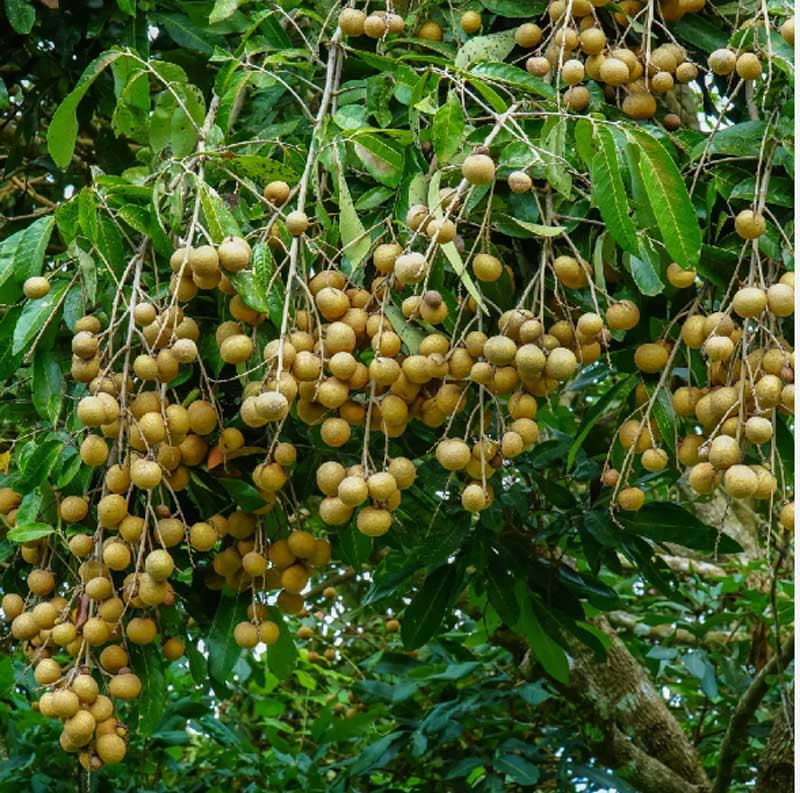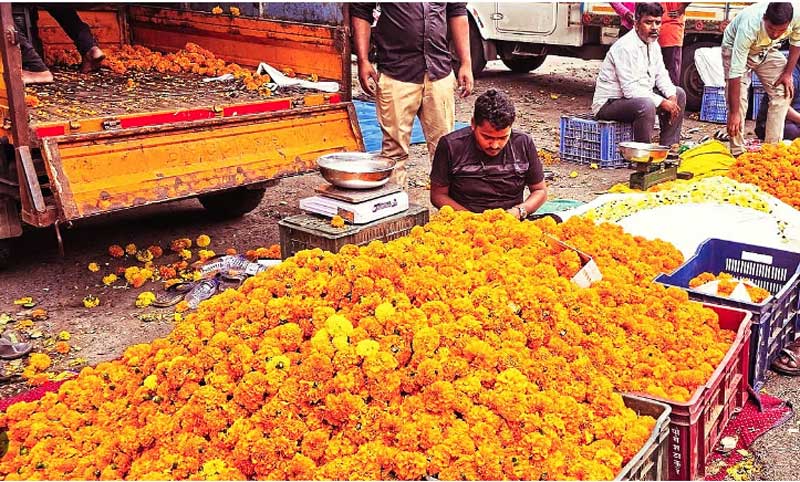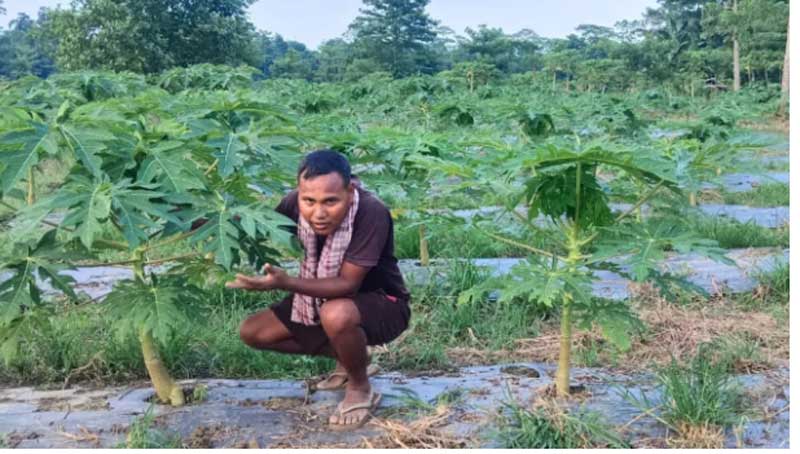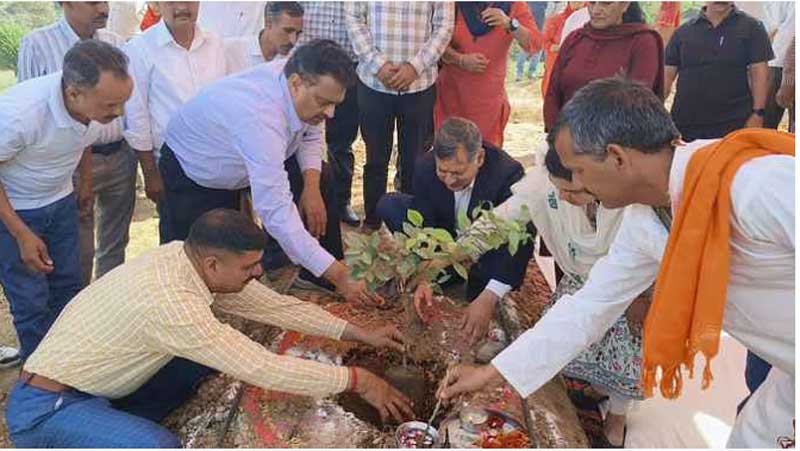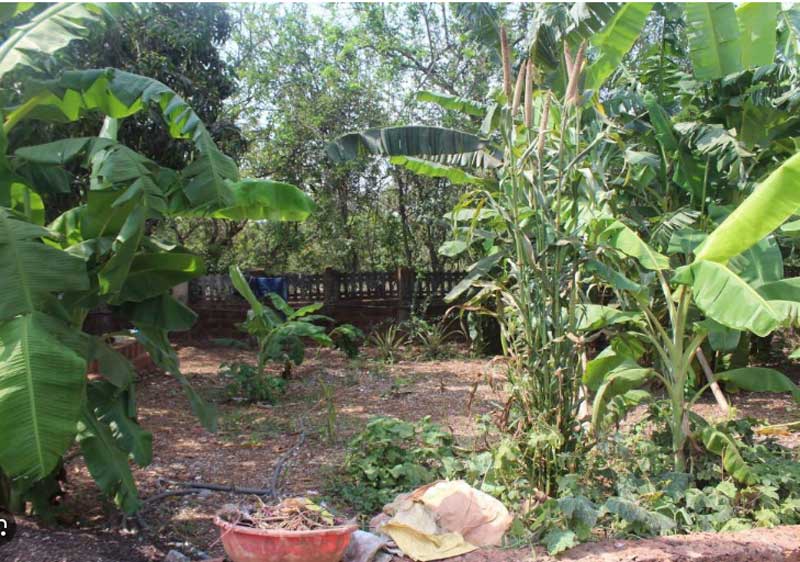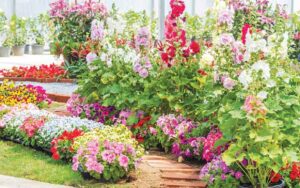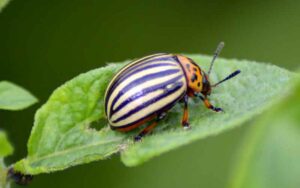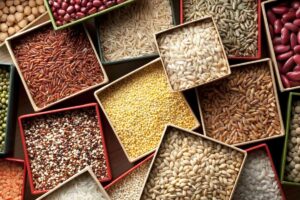Seeds of Success: Setting the Stage for Vibrant Beginnings and Flourishing Outcomes
Ruud van Zundert
Technical Specialist, Syngenta Flowers
The beginning steps in cultivation are of immense importance for success and optimal plant potential. The right start provides the basis for healthy growth and maximum results. In this article, we examine a few key factors in the sowing and germination stages to create favorable conditions for outstanding seed germination and young plant performance. Creating a Foundation for Vibrant Beginnings and Flourishing Outcomes!
Seed Enhancements that Improve Performance:
Through innovative seed coating techniques and proprietary processes, Syngenta Flowers has developed enhancement treatments with the aim to improve sowing efficiency, germination rates, and overall performance, providing growers a competitive edge.

Pelleted Seed: Enhancing Visibility and Sowing Ease
Used for smaller or irregularly shaped flower seeds. Seeds are coated with a bright golden yellow inert material. The pelleting process creates rounder seeds that are easier to see and sow, particularly when using a sowing machine. It simplifies the sowing process and increases accuracy, saving time and effort for growers.
Coated Seed: Smoother Surfaces for Improved Sowing
To address the challenge of sowing irregularly shaped flower seeds, seeds suppliers coat some of their seeds with a thin bright colored material. This coating improves the smoothness of the seed surface, making them easier to handle and sow. By reducing the friction and irregularities, coated seeds enable more efficient and precise sowing.
SatinCoat Seed: Superior Coating for Large Odd-Shaped Seeds
For larger odd-shaped seeds like Gerbera, Marigold, and Zinnia, Syngenta Flowers has developed SatinCoat, a silky smooth golden-yellow seed coating. SatinCoat enhances singulation (separation of individual seeds) and seed flow when using sowing machines. By improving the uniformity and precision of seed placement, SatinCoat seed coating maximizes germination rates and facilitates successful cultivation.
Primed Seed: Enhanced Germination for Better Performance
Syngenta Flowers employs a proprietary process to condition primed seeds. The treatment involves pre-germination preparation, resulting in faster and more consistent germination across a wider range of temperatures and moisture levels. Additionally, primed seed treatment helps overcome dormancy issues inherent in certain flower species. This enhanced germination capability gives growers more control over their crops’ establishment and growth, increasing productivity.
Most seeds will germinate over a wide range of temperatures but will have optimum temperatures for germination. For example, Vinca or Catharanthus roseus seeds ideally require temperatures between 23°C (73 °F) and 28°C (82°F ), but the optimum temperature is around 24-25°C (75°F- 77°F). If the media temperature drops below 23°C (73 °F) during germination it may eventually decrease germination rates.
Germination Media Blends and Moisture Management
Choosing the right germination media blend is crucial for the successful sowing and germination of seeds. The ideal media should hold a fine, uniform texture, good aeration, loose structure, free of pests and diseases, and a relatively lower fertilizer level. It should effectively hold and transport moisture through capillary action.
Germination media serve various important functions, acting as a water reservoir, facilitating nutrient and gaseous exchange for plant roots, and providing anchorage. Seed starter mixes consist of ingredients such as sphagnum peat moss, vermiculite, coco peat, perlite, wood fiber, or rice hulls, each serving a specific purpose. For instance, sphagnum peat moss retains moisture and improves the nutrient-maintaining capacity, while perlite aids in aeration and drainage. Coco peat and vermiculite retain moisture and prevent germ dehydration while vermiculite has the additional benefit of providing excellent aeration.
Monitoring the filling density and pressing force during tray-filling is essential to ensure consistency and to maintain the desired characteristics of the media blend. While achieving uniform distribution in the middle and at the edges of the tray is important, it is advisable to avoid excessive rubbing or compaction, striking a balance between providing sufficient water holding capacity, plant support, and promoting proper aeration.
In regions with tropical or hot climates like India and Southeast Asia, frequent irrigation is crucial due to increased evaporation and transpiration. Mixtures containing higher proportions of brown and fine dark peat are particularly advantageous as they possess a high water-holding capacity, ensuring a steady supply of water for the plants.
To summarize, loose and well-aerated media are essential as viable seeds require oxygen during germination. Restricted oxygen supply, especially in constantly water-saturated media, can cause delays or hinder germination.
When dealing with pelleted seeds, starting at a moisture level of 5 is crucial for the complete dissolution of the pellets and optimal germination.
Again, at all stages after sowing, take care not to clog the media. This can easily be achieved by employing regular intervals of fine misting. Never saturate the medium at one stroke with large droplet shower heads but opt for a more controlled and gentle approach.
Lastly, maintaining the appropriate pH range is vital for successful seed germination. The desired pH range falls between 5.0 and 6.0, with a wet-out target of 5.6. It is worth noting that pH tends to rise during use due to minimal fertilizer applications and the alkalinity of irrigation water. Additionally, the desired electrical conductivity for germination and propagation ranges from 0.7 to 1.0 mS/cm.
Creating Optimal Conditions for Seed Germination: Seed Covering and Moisture Management
Seed germination is a pivotal stage in the life cycle of plants. When done correctly, it sets the foundation for healthy growth and robust development. However, if neglected, it can lead to poor germination rates and obstruct the potential of your plants. To maximize germination success, several key factors must be considered: the covering of seeds, light, temperature regulation, and moisture management. By paying close attention to these factors, you can create the optimal conditions for your seeds to do well.
Covering the seeds after sowing is not always necessary. However, in drier climates, a very light cover of, for example, vermiculite can prove beneficial.
This thin layer helps retain moisture around the seeds, creating the ideal environment for germination. It prevents excessive drying out, which can hamper the germination process.
It is important to note that not all seeds require covering. Some plants, like Begonia, Gerbera, and Petunia, benefit from exposure to light during germination. If you are sowing seeds that need light and you choose to cover them, it is crucial not to bury them too heavily. A very thin layer of fine peat moss or vermiculite is sufficient. This will still allow some light to reach the seeds while still providing a thin protective layer.
On the other hand, plants such as Geranium, Marigold, and Catharanthus roseus germinate best in the dark. Consulting culture sheets provided by your seed supplier such as https://www.syngentaflowers-us.com/techlibrary/search/techlibrary can provide valuable information on the light requirements of specific seeds.
Again, proper moisture management is another key aspect of successful seed germination. After sowing the seeds, it is essential to wet the media. Using a fine mist spray is ideal to avoid displacing small seeds. Avoid excessive flooding or splashing, as it can lead to poor germination or seed displacement.
In general, the first ten days are particularly critical in determining the quality of germination. Finding the right balance of moisture and oxygen is vital. Make sure the seed does not dry out during germination, as this can delay and hamper development. However, make sure the media does not become saturated, as excess moisture can also deprive the roots of essential oxygen.

Tackling Fungus Gnat Pressure in Seedling Production
Fungal gnats are prevalent in areas of high moisture, such as climate chambers, mist compartments, and germination tunnels. It may become a severe problem, especially for the slower germinating crops like Begonia that haven`t established a proper root system yet.
Fungal gnats are attracted to decaying organic matter and fungus. They lay their eggs in the media, their larvae feed on fungi and plant roots causing considerable damage to seedlings. Larvae create wounds that allow fungal pathogens such as Pythium, Thielaviopsis, and Fusarium to enter. Adult fungus gnats can also transmit fungal pathogens, including Botrytis.
To manage fungus gnats, several control measures can be implemented. The use of sticky tape can help identify the level of presence. It is important to remove discarded plant material and old growing media to minimize breeding sites. Maintaining a weed-free environment and controlling algae in pots and propagation areas also helps reduce the population. Cleaning up standing water and avoiding overwatering are crucial to prevent infestations. Maintaining cleanliness and hygiene in the greenhouse is essential to prevent heavy infestations.
Regular scouting and record-keeping are also crucial for monitoring pest populations. Counting adults attracted to yellow sticky cards can provide valuable information. Biological controls, such as beneficial nematodes and predatory mites, can be used to manage fungus gnats. Steinernema feltiae is an effective nematode for controlling fungus gnats, while Hypoaspis is a predatory mite that preys on fungus gnat larvae.
Chemical control methods can be employed to target larvae or adults, with a focus on the larval stages for long-term control. Insecticide drenches are effective against larvae, while sprays can control adults. It is important to follow the instructions on the product label and use only chemicals registered for use in your country. Always test crop protection products on a small scale before applying them to a larger batch to avoid the risk of phytotoxicity. Use only registered products for your country.
It is important to note that these measures work together as a comprehensive approach. Implementing just one or two actions is unlikely to generate the desired results.
In conclusion, the success of any plant cultivation venture lies in the careful and strategic management of seed sowing and germination. By utilizing the strength of innovative seed enhancement treatments, selecting the right germination media blend, and implementing effective moisture and fungus gnat control measures, growers can establish a solid foundation for their plants’ growth and development. Attention to detail, consistency, and regular monitoring are key to achieving vibrant beginnings and flourishing outcomes. With the information and techniques outlined in this article, growers can optimize their seed germination processes and set themselves up for a successful and productive season.





